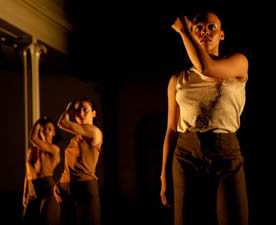The afternoon of Saturday, February 21, was beautiful, but more than a thousand people stepped out of the intense winter sunlight into Duke Chapel to ponder death and deep space. There was no sermon, and the chapel had not installed a planetarium, but the Choral Society of Durham and the North Carolina Symphony presented an exciting program representing man’s attempt to know the unknowable. William Henry Curry, Associate Conductor of the NCS, was on the podium to direct a remarkable performance of Gabriel Fauré’s Requiem, followed by a rare complete performance of The Planets, Gustav Holst’s most popular work.
Requiems, as compositional devices, have attracted many of the greatest composers throughout history, yet the one written by Gabriel Fauré is among the few that do not resort to scare tactics and fear to reach the audience. Its calmness and serenity are as inviting as a warm bed on a cold evening, making you want to jump right in. Listening to Fauré’s Requiem seems to alleviate any fear of what is on the other side of mortal life. Fauré began composing this masterpiece in 1887 and subsequently took it through many revisions. In one version, there are no violins except for a soloist in the final movement. The version played at this performance was an expanded orchestration that included a full violin section and woodwinds. Still, the upper strings are tacet in the first two movements, allowing a rare opportunity to hear the superb cello and viola sections without those high-flying fiddles getting in their way. I was fortunate to be sitting in the second row, and I could see and hear these generally unheralded sections up close. Even in the finest orchestras, there are sometimes stragglers in the backs of sections, but there are none in the NCS. The warm, unified that emerged from the lower strings was a marvel, and it was even more so in the pianissimo passages.
Maestro Curry displayed great finesse with the treacherous acoustics of Duke Chapel, although there seemed to be a dichotomy between the huge choral forces assembled and the sometimes timid sound coming out of them. Timid is as far removed from the sound emanating from the body of guest baritone soloist Jason Howard as you can get. Even taking into account that I was just a few feet away, Howard has one of the most powerful and resonant voices I have ever heard – and I don’t think he even shifted all the way into fifth gear. If you can label a movement as the “hit” of this Requiem, it would definitely be the exquisite “Pie Jesu” section, with soprano solo. Amanda Pabyan gave a beautifully controlled and delicate performance of this treacherously exposed, gorgeous solo. That alone was worth the price of admission.
The great film composer John Williams and several others make no secret or excuse for “borrowing” orchestration techniques and styles from Holst’s masterpiece for their own works. Everything old is new again, and there are hundreds of millions of people familiar with The Planets without even knowing it.
Having developed an interest in astrology right before the outbreak of World War I, Holst began work on what he initially called Seven Pieces for Large Orchestra. Large is right – five percussionists, six horns, two harps, expanded winds and brass; it’s no wonder that the slightly smaller-than-normal strings strained at their limit to be heard above the brass when they let loose. The re-titled work remained in seven movements, each depicting one of the planets known at the time, except for our home planet.
“Mars, the Bringer of War” (as the movement is listed) starts off this opus with the strings playing col legno (with the wood of their bows) an ostinato figure that keeps rising in volume and intensity until they switch to the hair of their bows as a release from the tension. It has been described by some as a musical depiction of the impending march to war; whether true or not, it builds to such a loud, violent, and frightening climax that it might as well be. “Venus, the Bringer of Peace,” is next; it is every bit as serene and pastoral as “Mars” is warlike.
In these days of dwindling classical radio stations, many of the remaining ones rely on sections of larger works for their playlists. “Jupiter, the Bringer of Jollity” is The Planets’ most-played single movement. Its combination of traces of Stravinsky with one of the most beautiful English themes (the tune is from what was said to have been Princess Diana’s favorite hymn) results in its top-10 status. The final movement, “Neptune, the Mystic,” left us floating in an otherworldly plane as the women of the Choral Society of Durham, hidden in the side chapel, sang a wordless accompaniment to the remarkable depiction of the infiniteness of space.
It is getting difficult to continue describing the brilliance, virtuosity, and sensitivity of our state’s orchestra. It would be interesting to compare side-by-side performances by a “top tier” orchestra with the NCS. Based on this concert and the others I have heard in the last year, the NCS takes a back seat to no other. And chances are it’s going to get even better.












